
If inflation is ‘easing’, why are groceries getting more expensive?
EXPLAINER: Economic indicators are useful for those who understand what they mean, but sadly, most of us don’t.

Economic indicators are useful for those who understand what they mean, but sadly, most of us don’t.
For the latest financial news, bookmark The South African website’s dedicated section for free-to-read content
When we see headlines about inflation easing, yet the prices of just about everything continue to increase, it’s hard to understand why we should actually care about an inflation rate that appears to be completely disconnected to our lived reality.
The cost of a basket of food and non-alcoholic beverages is part of what StatsSA uses to calculate inflation.
StatsSA publish the average prices of the products in that basket monthly in a spreadsheet.
The Outlier website created a tool that takes some of those prices and visualises them, as a kind of reality check.
So when you think, ‘wow bananas are getting expensive’, you can actually see that they are and you’re not imagining it.
An earnings report published by StatsSA last year showed that half of the 13 million ‘employees’ in the country earned R5 417 a month or less.
Admittedly, that data was for 2022, but it’s unlikely there has been a radical change since then.
In December 2024, minimum wage was around R4 400 a month (if you worked full-time for 20 days).
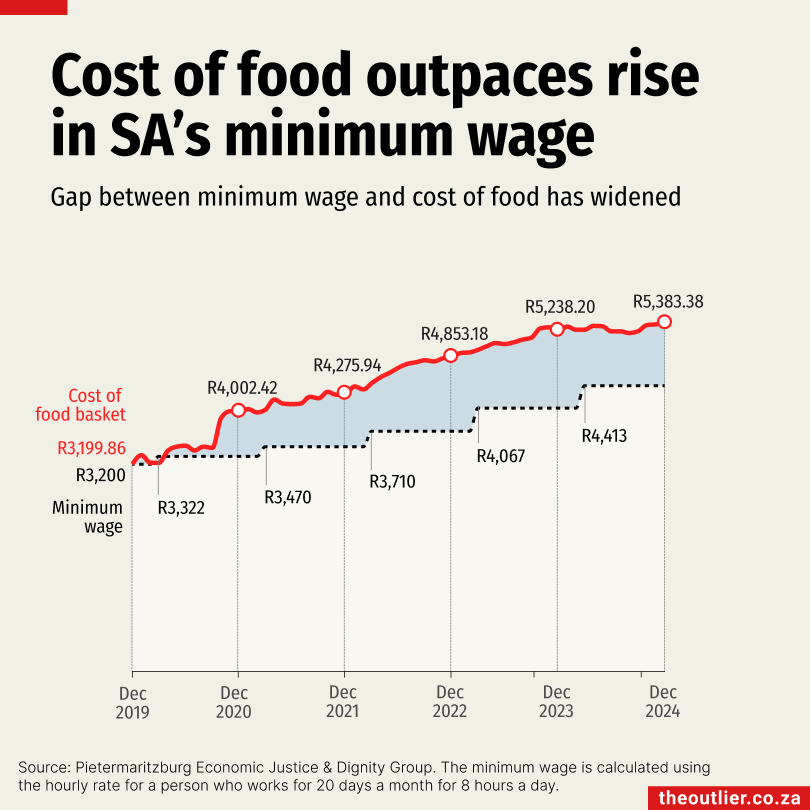
The Pietermaritzburg Economic Justice & Dignity Group (PMBEJD) have for years been collecting the prices of a basket of 44 goods that are bought by women living in low-income households.
The basket includes the foods and the volumes of these foods that women living in a family of seven members (an average low-income household size) say they typically try to buy each month.
The chart above shows how the cost of this basket of goods has increased between December 2019 and December 2024 and compares it with the national minimum wage.
The basket increased in price by R2 183 over five years. The minimum wage increased by about R1 200.
In percentage terms, that’s a 38% increase in wage compared with a 68% increase in the cost of the food basket.
Basically, the gap between the minimum wage and cost of this basket widened during Covid and has never really recovered.
This obviously puts a huge strain on a family relying on one minimum wage, but even if a household has two minimum wage earners, the budget will be tight.
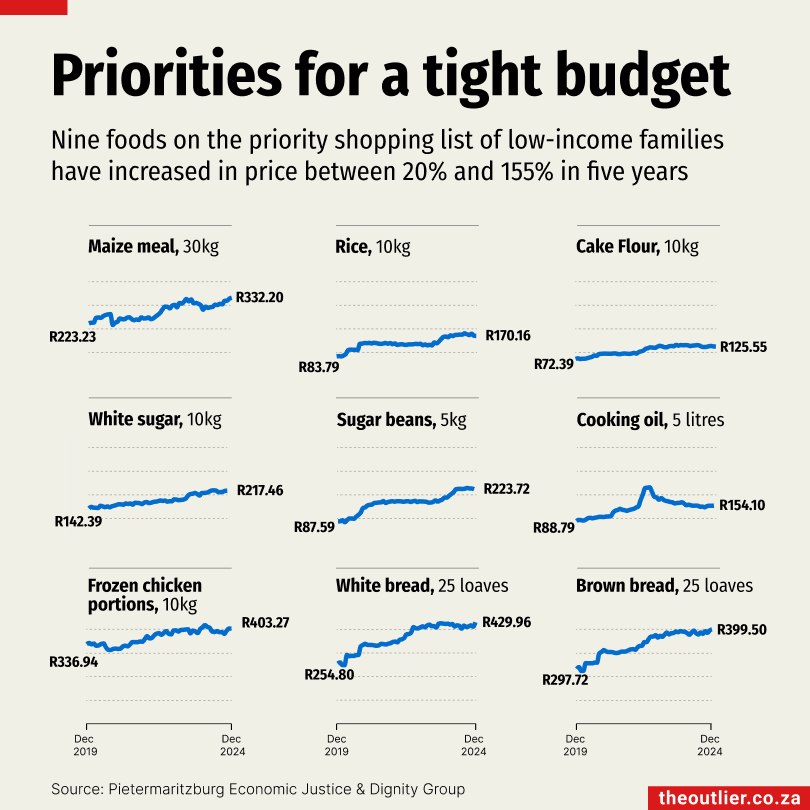
People on a limited budget have to prioritise what they buy.
The PMBEJD collects data on the items that women in low-income households prioritise and buy first in order to ensure their families are fed.
The Outlier plotted the change in prices of nine of them in the chart above.
There are only two vegetables on the priority list, potatoes and onions. These priority foods are filling, but often insufficient to meet the nutritional needs of a family.
It costs just R2 900 a month to buy those priority food items. Adding veggies, proteins, and nutritional diversity to the plate costs an extra R2 475.
Prices of fruits and vegetables also tend to fluctuate seasonally, so can add additional cost.
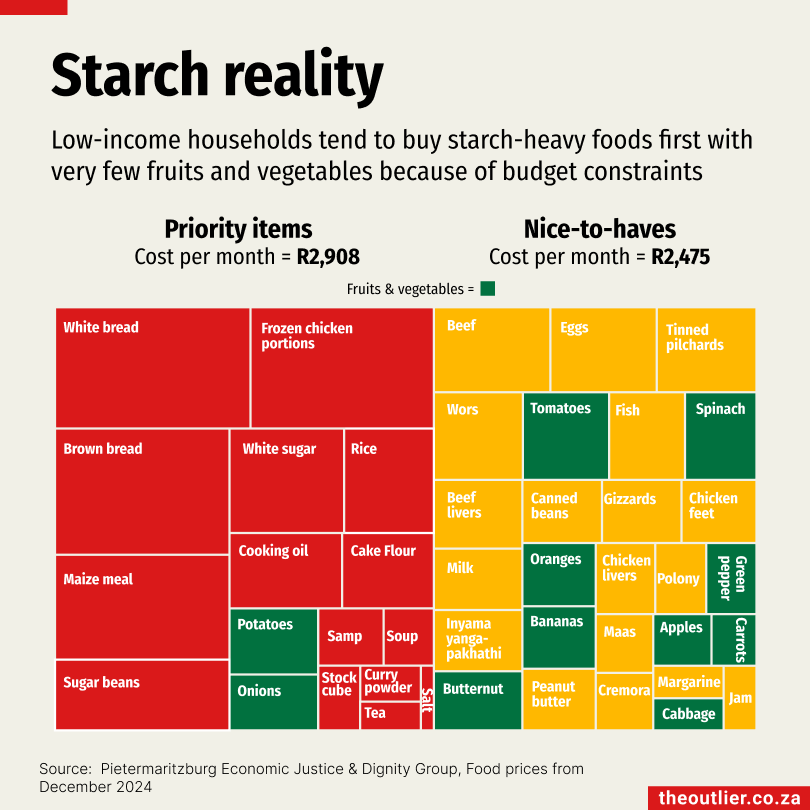
Retail check for middle class shoppers
In July 2022, The Outlier started collecting the prices of goods at South Africa’s main retailers, the Checkers, Pick n Pays, Food Lovers Markets, Spars and Woolworths that are key stores in malls around the country.
They published a monthly chart of the prices of a food basket and the key takeaway was that prices on supermarket shelves tend to fluctuate – a lot.
The chart below is a sample of six food products we’ve collected prices for from three national supermarket chains, which illustrates that point.
The data doesn’t go back far enough to reflect the Covid pandemic price jump in 2020 that the PMEJD prices do.
What was found is that it has become increasingly difficult to find a shelf price for goods in supermarkets.
There are often multiple options with discounts for people with loyalty cards and other discounts if you buy more than one of an item.
It can be very annoying if you only want one thing and you don’t have a loyalty card.
The Outlier haven’t added the names of the supermarkets to the chart, suffice it to say that supermarket X is green, Y is pink and Z is blue.
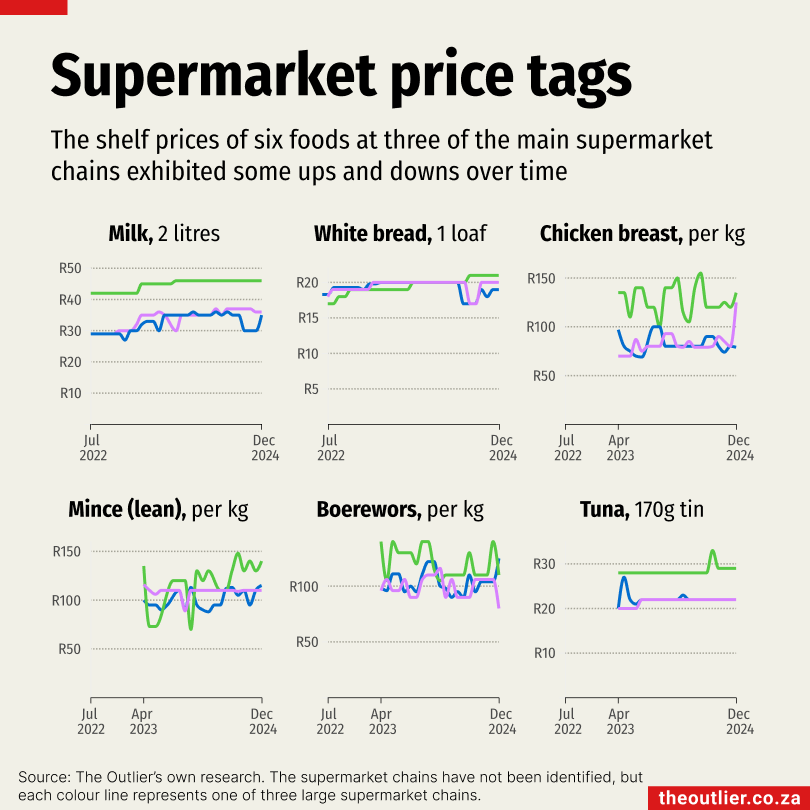
StatsSA’s average food prices
The Outlier compared the prices of six food items collected by PMEJD and one of the supermarkets with the prices in the basket of goods and services that StatsSA uses to calculate inflation.
As expected, the StatsSA prices tend to sit in the middle of the prices low-income families pay and those at the supermarket we collected.
They are monthly averages, after all.
Using the StatsSA prices, bread has increased by 41%, milk by 29%, oil by 62%, peanut butter by 54% and sugar by 56% between December 2019 and December 2024.
Maize meal has increased by 35% since October 2022, which is when the StatsSA data starts.
What about coffee and chocolate and some those other grocery items that make it into our shopping trolleys even though they aren’t always necessities?
Chocolate’s definitely getting more expensive and so is coffee.
The Outlier selected a few products below to see how their average prices have increased.
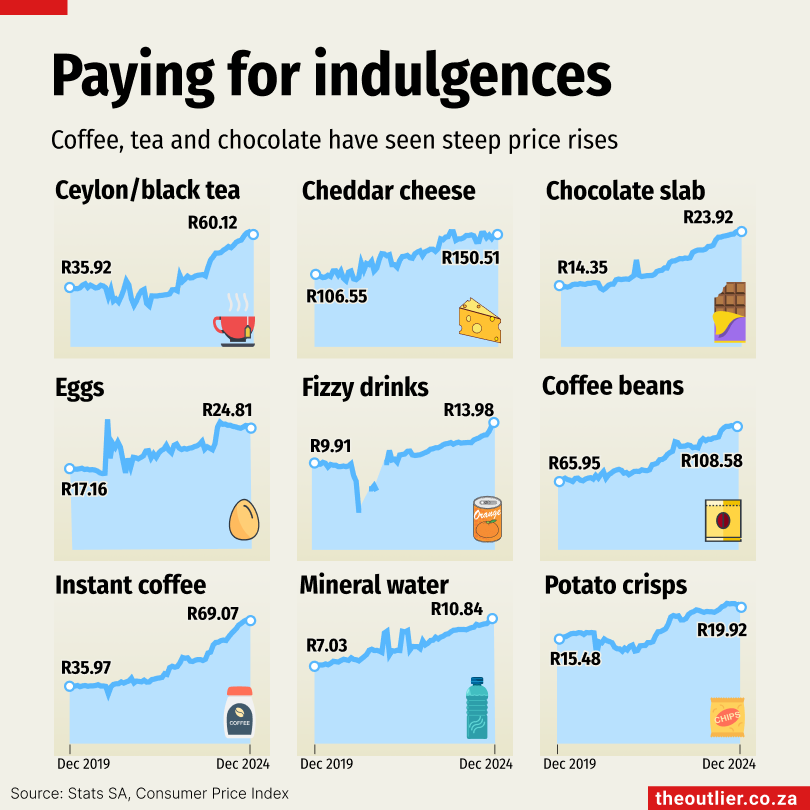
What can we take away from this deep-dive into food prices?
Prices are still high.
Inflation measures the change in the cost of goods, not the actual cost, so if inflation slows down, prices still increase, but not as fast.
What’s the ONE food item you feel as jumped in price lately?
Let us know by leaving a comment below, or send a WhatsApp to 060 011 021 1
Subscribe to The South African website’s newsletters and follow us on WhatsApp, Facebook, X and Bluesky for the latest news.

